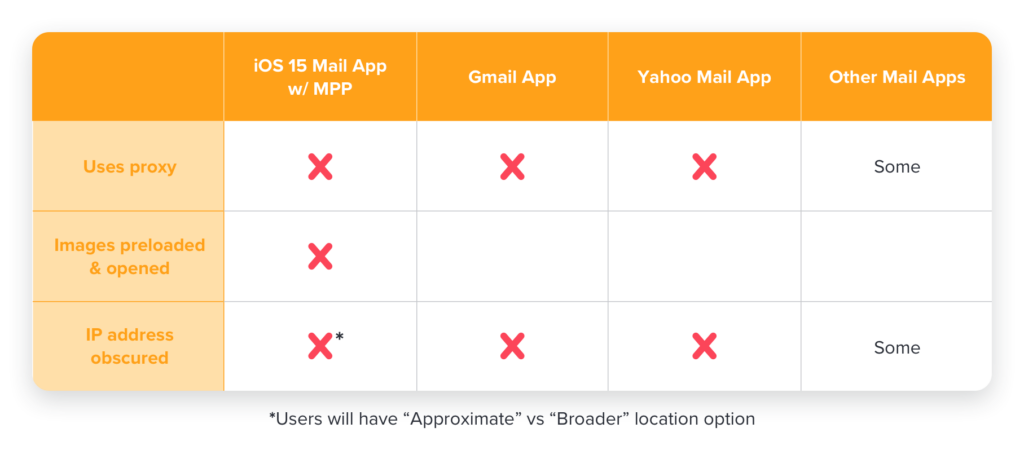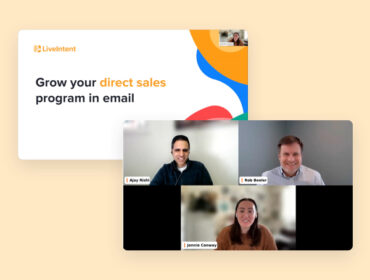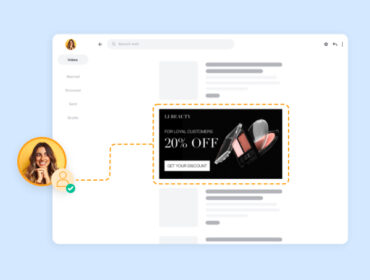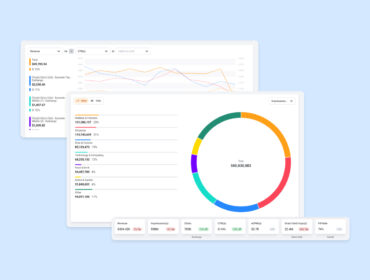Real Time Banter with Chad White: What you need to know about Mail Privacy Protection (MPP)
This June, Apple announced a new feature that is shaking up the email marketing world: Mail Privacy Protection.
Set to launch in the fall with iOS 15, Mail Privacy Protection (MPP) gives Apple Mail users more control over the data shared with companies sending them email.
To discuss these upcoming changes, we invited Chad White, Head of research for Oracle Marketing Consulting, to join us on Real Time Banter. Chad shared his thoughts on what these changes mean for email marketing and how publishers and brands can prepare for them.
What exactly is Mail Privacy Protection?
According to Apple, “In the Mail app, Mail Privacy Protection stops senders from using invisible pixels to collect information about the user. The new feature helps users prevent senders from knowing when they open an email, and masks their IP address so it can’t be linked to other online activity or used to determine their location.”
In other words, as White succinctly summed it up, Apple’s new Mail Privacy Protection feature will do six things:
- Generalize the opener’s location
- Block forward tracking (when you forward an email to a friend)
- Hide device information
- Disrupt live content that populates at the time of open
- Obscure open time
- Create false email opens
Among the new privacy enhancements in iOS 15, LiveIntent anticipates that Apple will introduce an “iOS Proxy,” similar to Gmail, Yahoo Mail, and Outlook proxies. When an email subscriber’s Apple Mail app starts up, it will trigger a download of the email to their device. At that time, before the email is opened to be read, Apple caches all of the images in the email, creating copies in a new location on the Apple Privacy Cache with an IP address assigned to a general region instead of a reader’s specific location (think New York State instead of New York City). Below is a chart comparing the iOS 15 Mail App with MPP to other major mail apps.

How will Mail Privacy Protection affect testing within email?
Even with these changes, White expects roughly half of email senders’ audiences to be unaffected — the half that doesn’t use Apple Mail. Publishers and marketers can use that unaffected audience to gather insights and test new strategies that go beyond open rates, for example
“Send time optimization will not be able to function entirely on opens anymore because it’s just not going to be accurate,” White says. “And in that case, we’re going to have to fold in click rates as well, which in my mind is not a horrible thing.”
White believes publishers and marketers should be looking at clicks anyway, because compared to opens, they’re more indicative of true engagement.
“If I had my choice, I’d rather send an email at a time when someone was proven to be clicking and taking the time to engage versus taking those few seconds to just look at the email,” White adds. “I want them to go deeper and take that next step.”
What metrics should marketers hone in on during this time?
Measuring more than just open rates also allows marketers to think about how their customers behave across stages of the marketing funnel.
“It pushes us further down the funnel, looking at things like clicks and conversions, which is great,” White says. “And hopefully it’ll get us taking more of a pan customer or subscriber lifetime value approach. I think that is really healthy.”
This comprehensive view can also allow publishers and marketers to see how customers behave across departments, to which many may have been blind.
“Hopefully, these changes at Apple will start to pull those blinders away and get folks working across departments,” White says. “All these departments want the same thing, which is to grow the business and to have more customer success. But right now, it doesn’t fully work that way. So hopefully this will spur some good conversations.”
What do these changes mean for consumers?
Surveys consistently show that consumers want two things: more privacy and more relevant messages from brands. Many consumers might not realize that, by providing the former, Apple will actually be taking away the latter.
“Six months from now, subscribers are going to start noticing […] that some of the engagement-based series that a brand runs don’t work very well anymore,” White says. “And I feel like what’s going to happen is that marketers are going to get blamed.”
As a result, marketers will have to work harder than ever to deliver relevant experiences via email.
“Unfortunately, what’s going to happen is we’re going to have ‘normal’ subscribers and Apple subscribers, and you’re going to have different ways of treating these folks, just sort of bifurcating your audience,” White says. “It’s like a brand new segment that you have to pay attention to.”
Will the industry be ready in time for Mail Privacy Protection?
Marketers were only given a few months to prepare for Mail Privacy Protection, but the total effects won’t be instantaneous once it goes live. iOS 14 reached a 90% adoption rate in 10 months and White expects iOS 15 to reach the 50% mark by Christmas this year.
In the meantime, marketers can take plenty of steps to prepare.
“I think everyone is going to have to create a non-Apple audience where you have what I’m calling ‘real opens,'” White says. “If for nothing else, you’re going to want to watch that by mailbox provider for deliverability purposes.”
Most importantly, they should start getting ready now instead of waiting to see the fallout after iOS launches.
“Lots of changes and lots of facets — not great, but not Earth shattering,” White says. “A lot of these things can be mitigated. It’s just going to, unfortunately, mean a lot more work.”
How can LiveIntent customers prepare for iOS15?
LiveIntent has a set of best practices for customers to follow that will provide a mechanism to replace lost data. Over the coming weeks, we will publish more content on our blog that speaks to these best practices. In the meantime, please reach out to your LiveIntent account rep to learn more or contact us here.


